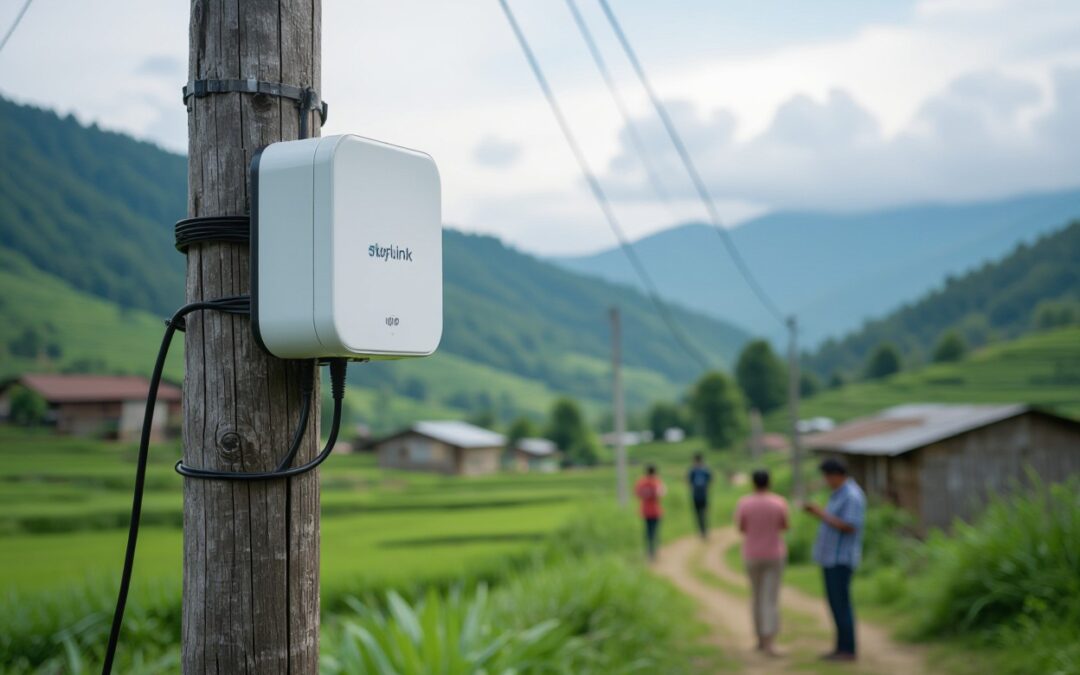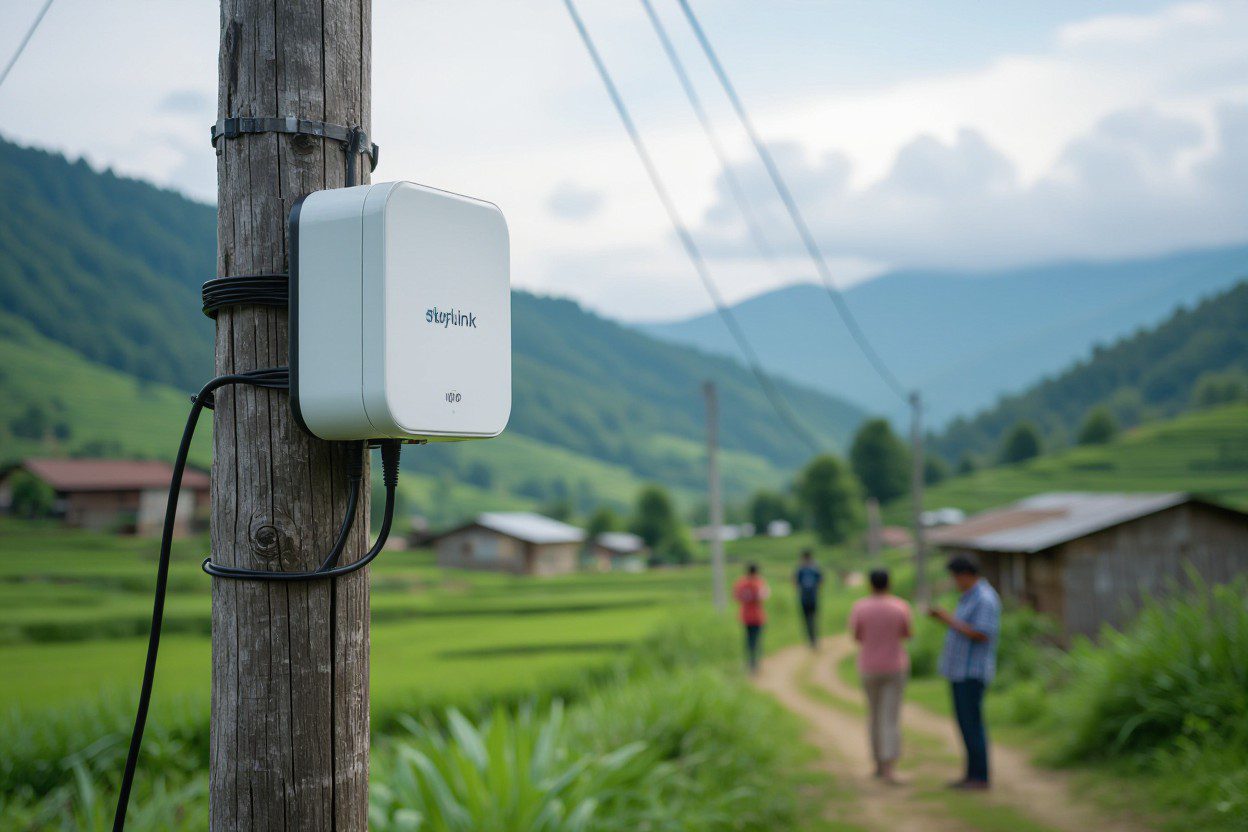
How to Choose the Best Internet Service for Your Rural Home or Business
Rural internet access can be challenging, but selecting the best internet service for your rural home or business is within your reach. You need to consider various factors like connection types, speeds, reliability, and the range of internet providers available in your area. By understanding what each provider offers and how their services align with your daily online activities, you can make an informed decision that ensures consistent, high-quality connectivity. This guide, brought to you by E-Simply, will help you navigate your options and find an internet solution tailored to the unique demands of rural living and working environments.

Deciphering Available Internet Options in Rural Areas
Navigating the array of internet providers in rural areas means understanding that not all services are created equal. Options range from satellite and fixed wireless to DSL and fiber, each with distinct strengths and limitations based on location, terrain, and infrastructure. Examining the alignment of your rural home’s landscape with available technology can reveal which solution offers better reliability and cost-efficiency. Recognizing the nuances in coverage and potential data caps will help you avoid surprises and secure the best internet service tailored to your rural needs.
Exploring Different Types of Internet Connection
Different internet connection types deliver varying performance and reliability. Satellite internet offers broad coverage but often suffers from latency and data limits, while fixed wireless can provide faster speeds but requires a clear line of sight to towers. DSL uses existing telephone lines but may slow down as distance from the exchange increases. Fiber optic, though less common in rural zones, delivers top-tier speeds and stability. Recognizing these differences aids you in matching technology to your rural location, ensuring optimal service quality.
| Connection Type | Key Characteristics |
|---|---|
| Satellite | Widely available; high latency; potential data caps |
| Fixed Wireless | High speeds; requires unobstructed line of sight; weather susceptible |
| DSL | Uses phone lines; speed decreases with distance; moderate availability |
| Fiber Optic | Fastest speeds; highly reliable; limited rural coverage |
| Cellular (4G/5G) | Mobile connectivity; variable speeds; dependent on signal strength |
Evaluating Speed Requirements for Daily Usage
Assessing your household or business internet speed needs depends heavily on usage patterns such as streaming, video conferencing, or large file transfers. Streaming HD video typically demands at least 5 Mbps per device, whereas 4K streaming requires upwards of 25 Mbps. Running multiple devices simultaneously can multiply these requirements significantly. Recognizing your average speed requirements helps in selecting an internet plan that offers sufficient bandwidth without paying for unnecessary capacity.
For example, a family of four streaming Netflix in HD while also working and gaming online might need at least 50-75 Mbps to avoid slowdowns. Businesses involved in cloud services or virtual meetings should target even higher speeds to maintain seamless operations. Analyzing typical daily activities ensures your chosen internet provider matches your speed demands effectively, optimizing both performance and cost.
Pricing Models: What You Need to Know
Choosing the best internet service involves understanding various pricing models internet providers use. Some offer flat-rate monthly fees, while others charge based on data usage, which can quickly inflate your bill if you stream or download frequently. You might also encounter tiered pricing based on speed, where faster connections cost more but improve productivity and streaming quality. Pay attention to contract lengths and early termination fees, which can add hidden costs if you switch providers. Comparing these models helps you find a plan that fits both your budget and your rural internet needs without surprises.
Hidden Fees and Charges That Affect Your Bottom Line
Many providers advertise attractive base rates but tack on fees like installation charges, equipment rentals, or surcharges for rural service areas. These hidden fees can add $20 to $50 monthly, increasing your total cost significantly. Additionally, some companies impose data overage fees or require deposits if you haven’t established credit. Always request a detailed breakdown of all potential charges before signing up and look for providers with transparent pricing, ensuring your monthly expenses align with your budget and avoid surprises on your bill.
Evaluating Value: Is Higher Speed Worth the Cost?
Higher speeds often come with steeper monthly prices, but assessing if you truly need them matters, especially in rural regions where infrastructure may limit real-world performance. For example, upgrading from 25 Mbps to 100 Mbps can raise costs by $30. Yet, if your devices or applications don’t use full bandwidth, the benefit might be minimal. Consider how many users and devices share the connection and the types of activities you do most—video calls, cloud storage, or simple browsing—to decide if faster speeds justify the additional expense.
Higher speeds offer tangible benefits for businesses reliant on cloud services and large file transfers, drastically reducing wait times and boosting efficiency. On the other hand, residential users who primarily check email or stream in standard definition may find minimal improvement beyond 50 Mbps. In rural areas, technical constraints like limited fiber infrastructure can also prevent you from fully realizing advertised speeds. Testing speeds during peak hours or choosing providers offering money-back guarantees can help you accurately evaluate whether paying extra for faster internet delivers corresponding value to your rural setup.

Performance Reliability: The Backbone of Connectivity
Reliable performance shapes your daily online experience and influences every task, from streaming to remote work. The best internet service delivers consistent speeds and uptime, even during peak hours. For rural areas, this means choosing providers who maintain infrastructure that withstands weather challenges and fluctuating user demands. Investigate uptime guarantees and look for customer reviews from similar rural environments. Providers offering fiber or fixed wireless often outperform satellite in consistency, though availability depends on location. Your choice directly impacts productivity and frustration levels, so prioritize stability alongside speed.
Understanding Latency and Bandwidth
Latency measures the delay between sending and receiving data, while bandwidth quantifies the connection’s maximum data transfer capacity. Lower latency is necessary if you frequently video conference or play online games. In contrast, higher bandwidth supports multiple devices streaming simultaneously. Some rural internet providers offer asymmetric connections, giving you faster downloads but slower uploads, which may affect tasks like uploading large files. Assess your internet usage carefully to decide the ideal balance – for example, fiber options typically provide low latency and symmetrical speeds, enhancing performance during all activities.
Assessing the Impact of Geography on Service Quality
Geography heavily influences your internet options and quality, as terrain and distance from service hubs affect signal strength and speed. Mountainous regions or dense forests can degrade fixed wireless or DSL signals, while vast distances from central offices reduce DSL performance. Your best internet service might require combining technologies, such as fixed wireless supplemented by 4G/5G cellular backup. Maps of provider coverage and local user experiences can offer insight into specific regional challenges, helping you avoid providers whose infrastructure doesn’t support consistent connectivity in your area.
For deeper insight, consider how elevation changes impact wireless line-of-sight connections—hills or valleys can block signals causing intermittent drops. Satellite internet may offer broad coverage but often suffers from high latency and data caps, making it suitable only as a last resort. Some areas can benefit from community-driven broadband initiatives or cooperatives that build infrastructure designed specifically for challenging rural landscapes, providing tailored speeds and reliability that commercial providers might not prioritize. Exploring these options could unlock higher-quality service aligned with your geographic realities.
The Customer Experience Factor
Evaluating the best internet service means gauging how providers support you beyond just speed and price. Rural internet providers often vary widely in responsiveness, problem resolution time, and service consistency. You want a provider that not only promises coverage but delivers dependable service and timely fixes, minimizing disruptions to your home or business operations. Investigate how each company handles outages, maintenance, and customer inquiries to ensure you won’t be left in the dark when issues arise.
Navigating Customer Support and Service Reliability
Reliable customer support can make or break your internet experience. Providers that offer 24/7 help desks, local support teams, and quick technician dispatches stand out for rural customers. Check if they provide proactive outage notifications or self-service tools to troubleshoot common problems. Service reliability isn’t solely about uptime percentages—access to knowledgeable, courteous support when you need it can dramatically reduce downtime and frustration.
How User Reviews Can Guide Your Decision
Browsing user reviews reveals firsthand accounts of how internet providers perform in rural communities. Look for patterns in feedback about connection stability, customer service responsiveness, and whether promised speeds are consistently delivered. Reviews often highlight hidden fees or service quirks that official info might omit, giving you a clearer picture of day-to-day service quality.
Diving deeper into user reviews helps you discern which internet providers genuinely cater to rural needs and which fall short. Platforms like the Better Business Bureau and specialized rural internet forums offer aggregated ratings and detailed stories from users facing similar geographic challenges. Comparing multiple reviews enables you to spot consistent trends—such as frequent outages during storms or billing transparency—that influence long-term satisfaction. Leveraging this user-generated knowledge empowers you to avoid common pitfalls and select the internet service best aligned with your expectations and lifestyle.
Future-Proofing Your Internet Choice
Choosing the best internet service for your rural location means looking beyond immediate needs to the future. Technologies evolve rapidly—gigabit speeds, expanded fiber optic networks, and 5G fixed wireless are steadily improving rural connectivity. Explore providers investing in infrastructure upgrades or those partnering with emerging tech firms. A service with the potential for bandwidth enhancements and lower latency ensures your connection won’t lag as online demands and digital tools grow.
Anticipating Technology Upgrades and Trends
Keeping an eye on industry trends helps you anticipate necessary speed and reliability improvements. Satellite internet providers like Starlink are launching upgraded satellites to boost capacity and reduce latency, transforming rural options. Fibre-to-the-home expansions and fixed wireless 5G rollouts are making higher-speed service more accessible. Checking provider roadmaps or public infrastructure plans informs you how quickly your area could gain next-gen services, saving you from switching providers often.
How to Select a Provider with Scalability Options
Opt for internet providers who offer tiered packages or flexible contracts that accommodate future growth. Providers able to seamlessly upgrade speeds—from 100 Mbps to 1 Gbps, for example—help you avoid service interruptions or costly equipment swaps. Additionally, inquire about the provider’s hardware compatibility and upgrade policies to maintain a smooth transition as your bandwidth needs evolve.
Dig deeper into providers’ scalability by reviewing their network capacity and support capabilities. Those investing in fiber infrastructure typically provide more scalable options than legacy DSL or fixed wireless providers. Look for service guarantees that support easy plan adjustments without steep penalties. Providers with modular equipment—like dual-band routers or multi-gig modems—can better align with emerging standards, making your internet investment more resilient as technologies advance.
Wrapping Things Up
With this in mind, when selecting the best internet service for your rural home or business, you should prioritize providers known for reliable coverage in less populated areas. Evaluate different internet providers by comparing connection types like fiber, DSL, or satellite, and consider speed, data limits, and customer support. Look for plans tailored to rural needs, ensuring you get consistent and affordable service. By carefully researching and assessing these factors, you can find the right internet solution that meets your specific requirements and keeps you connected efficiently.
FAQ about Choosing the Best Internet Service for Rural Homes and Businesses
Q: How can I find the best internet service available in my rural area?
A: Start by researching local internet providers that specifically serve rural regions. Check for availability of various technologies such as DSL, satellite, fixed wireless, and newer options like 5G or fiber if available. Use online tools or contact providers directly to confirm coverage. Comparing speed offerings, data limits, and pricing will help identify the best internet service suited to your rural home or business needs.
Q: What types of internet connections are most reliable for rural locations?
A: While traditional cable and fiber-optic connections are often limited in rural areas, alternatives like fixed wireless, satellite internet, and increasingly available 5G mobile broadband can offer reliable service. Fixed wireless uses radio signals from nearby towers, providing higher speeds than satellite. Satellite internet is widely available but may have higher latency. Assessing the trade-offs and service quality from different internet providers will guide your choice.
Q: What factors should I consider when selecting an internet provider for rural use?
A: Key factors include download and upload speeds, data caps or throttling policies, contract terms, customer support availability, and installation fees. Additionally, verify whether the provider’s service can support your typical online activities, such as video conferencing, streaming, or running a business. Opting for providers experienced in rural internet service ensures a better understanding and solutions for unique coverage challenges.
Q: Are there specific challenges in getting high-quality internet service in rural areas?
A: Yes, rural regions often face issues like limited infrastructure, fewer service options, and longer distances from network hubs, which can affect speed and reliability. Weather and terrain may also impact wireless connections. When choosing the best internet service, consider providers who invest in rural broadband expansion and offer customer guarantees or service level agreements to address these challenges effectively.
Q: How can I optimize my rural internet setup once I select a provider?
A: Installing a quality router in a central location, minimizing interference, and using wired connections where possible can improve performance. For fixed wireless users, ensuring the receiver antenna has a clear line of sight to the tower is important. Regularly updating equipment and discussing technical support options with your internet provider will help maintain the best internet service experience in your rural home or business.
Ready to experience reliable internet in your rural home or business? E-Simply offers a range of internet plans, including fixed wireless options designed to meet the unique demands of rural living. Whether you’re in Texas or other challenging service areas, E-Simply provides high-speed, unlimited internet solutions with no data caps and no contracts. We offer various speeds to fit your needs, from basic Browse to 4K streaming and online gaming.
Don’t let limited options hold you back—call us today or visit E-Simply.net to find the best internet service for your rural location and get connected!
The Skylink Device: How It Brings Fast Internet to Remote Locations
The Cost-Effectiveness of Reliable Internet in Rural Areas: Is It Worth It?
















